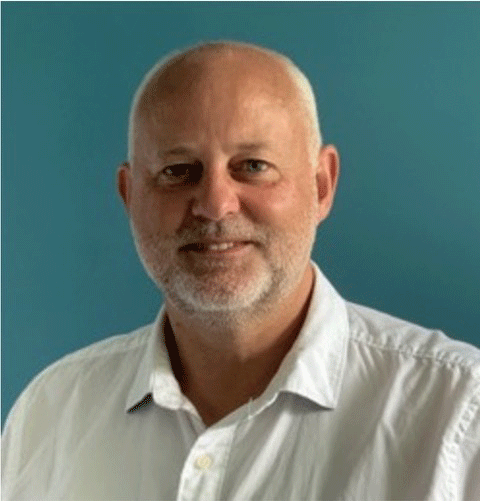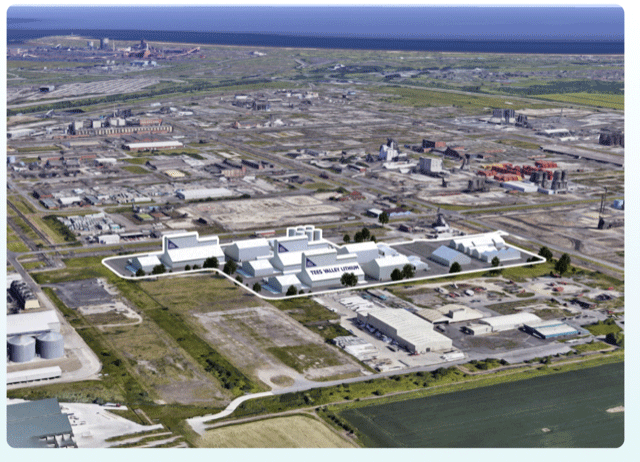Meeting the world’s exploding demand for lithium-ion batteries will require lithium ore equivalent to an estimated 74 new lithium mines with an average size of 45,000 metric tons per year by 2035. In Europe alone, battery gigafactories are projected to produce some 700 GWh per year by 2025, requiring a supply of 325,000 tons of lithium hydroxide and 325,000 tons of carbonate each year, according to pricing reporting agency Benchmark Minerals Intelligence.
This new demand is caused by a race to hit net-zero 2050 climate goals, but should it be met by a supply chain that has fossil fuel emissions baked in all along the way?
 John Walker, CEO, Tees Valley Lithium“Absolutely not,” says John Walker, CEO of Tees Valley Lithium (TVL). He is part of a team aiming to create a lithium hydroxide plant in northeast England with a capacity of 96,000 metric tons per year. He says shipping spodumene thousands of miles and then refining it using an energy mix dominated by coal in existing Chinese processing plants adds to an already substantial carbon footprint from mining and transport. The new fleet of lithium refineries being built must do things differently, he says.
John Walker, CEO, Tees Valley Lithium“Absolutely not,” says John Walker, CEO of Tees Valley Lithium (TVL). He is part of a team aiming to create a lithium hydroxide plant in northeast England with a capacity of 96,000 metric tons per year. He says shipping spodumene thousands of miles and then refining it using an energy mix dominated by coal in existing Chinese processing plants adds to an already substantial carbon footprint from mining and transport. The new fleet of lithium refineries being built must do things differently, he says.
“China controls more than 90 percent of the world’s lithium, and they will need all of this for their own decarbonization plans,” says Walker, “so Europe needs to build its own infrastructure.”
Enabling ultra-low-carbon and low-waste manufacturing
The team developing the new venture intends to build its lithium hydroxide plant on a 20-acre plot owned by Sembcorp Energy UK within the new Teesside Freeport in northeast England. But first, the company will process spodumene into high-grade lithium sulfate in Western Australia for transport to and processing in the UK, reducing the volumes transported by 80 percent. At both sites, the company intends to employ innovative, breakthrough technology to enable ultra-low-carbon and low-waste manufacturing.
 The planned lithium hydroxide refining facility in northeast England will be the world’s largest of its kind when finalized, producing 96,000 metric tons per year.“At this point, we’ve completed the Class 4 Feasibility Study, the project’s production quality samples have been verified by Cathode Active Material, we’ve signed a supply agreement with global metals trader Traxys and had an initial oversubscribed GBP 1.2 million investment round,” says Walker. The plant intended for the UK is designed around four production trains, each with a capacity of 24,000 metric tons per year of lithium hydroxide. “The goal is to have the first of four manufacturing trains completed by the end of 2024,” he adds.
The planned lithium hydroxide refining facility in northeast England will be the world’s largest of its kind when finalized, producing 96,000 metric tons per year.“At this point, we’ve completed the Class 4 Feasibility Study, the project’s production quality samples have been verified by Cathode Active Material, we’ve signed a supply agreement with global metals trader Traxys and had an initial oversubscribed GBP 1.2 million investment round,” says Walker. The plant intended for the UK is designed around four production trains, each with a capacity of 24,000 metric tons per year of lithium hydroxide. “The goal is to have the first of four manufacturing trains completed by the end of 2024,” he adds.
Allowing carbon footprint reduction to steer project design
The TVL project’s ambitious time scale is part of a wave of new projects, including big plans from established players like Albemarle and a low-waste, low-carbon project development by Green Lithium, also in the UK. For these projects, securing external investment and permitting will involve making clear their choices regarding energy sources, fuel and sustainability.
Walker says that in the TVL project, carbon footprint reduction will shape each stage of the project design.
“We’re planning the largest project of its type and we have commissioned MINVIRO to complete an independent life cycle analysis and a comparison to conventional technologies,” he says.
Electrifying every stage of the process to eliminate carbon emissions
Tesla chairman Robyn Denholm has highlighted that roughly half of the carbon emissions of a battery cell are from mining, and she has voiced concern about logistics: “The best way to reduce the carbon footprint of minerals is to stop shipping them across 9,000 kilometers of ocean before refining them,” she said in a speech to the Australian Minerals Council last year.
So, what is TVL planning to do differently to avoid the CO2 emissions associated with conventional technologies?
TVL’s plans call for an intermediate refinery near Port Hedland in Western Australia where it intends to employ new technologies to obtain a high-grade lithium sulfate for transport for processing at the UK site. This gives mining companies another option than just selling to China.
We’re very interested in electrifying every stage of the process to eliminate carbon emissions, and that includes spodumene calcination and sulfuric acid roasting steps in the rotary kilns and also the drying step.
“We’re very interested in electrifying every stage of the process to eliminate carbon emissions, and that includes spodumene calcination and sulfuric acid roasting steps in the rotary kilns and also the drying steps,” says Walker. “For us, it makes no sense to create one environmental mess to solve another one.”
The electrochemical process will look to use low-carbon electricity in the UK to produce lithium hydroxide from lithium sulfate without the need for high-carbon-footprint chemicals, such as caustic soda, while liberating the sulfuric acid consumed in producing lithium sulfate in Australia without generating any waste.
In part two of this article, we look at the electrification of the proposed UK/Australian operations and how Kanthal can meet this new demand for process electrification.
良いものは、必ずさらに良くなります。
リチウムイオン電池産業が急成長する需要に対応するために生産規模を拡大する場合、効率的で持続可能な加熱プロセスが不可欠となります。 Kanthalの電気加熱技術は、CO2とNOxの排出を削減しながら、エネルギー効率と生産性を向上させます。 お客様のプロセスニーズに対する利点について、詳しくはこちらをご覧ください。